Fun with Sinister Dexter
Next:

In which I talk endlessly about 2000 A.D., the Galaxy's greatest comic


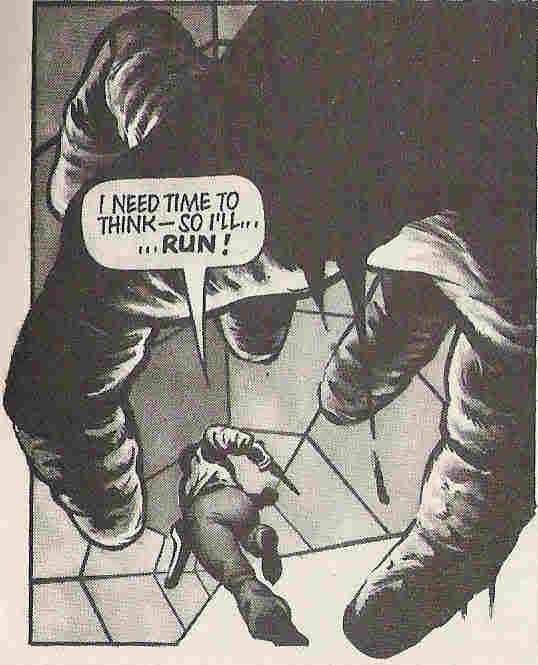 Here we can see a great draftsman at work, but falling into the classic trap of using the words to explain what is apparent in the picture. Indeed the whole story involves Dare talking to himself rather a lot, a trait I don't recall being central to the character. Luckily, the story itself is neat enough, although it feels like a mish-mash of Solaris and other 60s novels. I must admit that outside of 2000 AD, I've never read a Dan Dare story. I'm told that the Eagle originals are much better. Whatever - I like the Star Trek inspired Kelvin Gosnell/Dave Gibbons version on display here.
Here we can see a great draftsman at work, but falling into the classic trap of using the words to explain what is apparent in the picture. Indeed the whole story involves Dare talking to himself rather a lot, a trait I don't recall being central to the character. Luckily, the story itself is neat enough, although it feels like a mish-mash of Solaris and other 60s novels. I must admit that outside of 2000 AD, I've never read a Dan Dare story. I'm told that the Eagle originals are much better. Whatever - I like the Star Trek inspired Kelvin Gosnell/Dave Gibbons version on display here.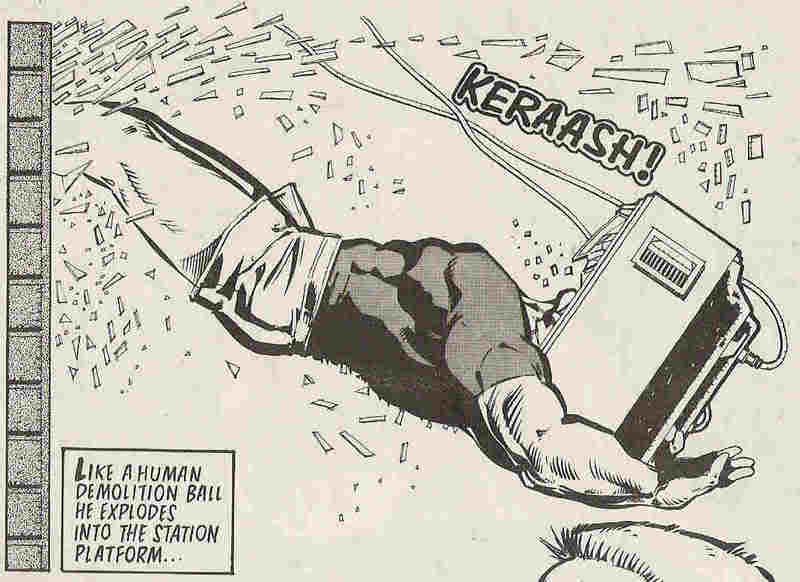 Then there's a train crash and a surprisingly poignant ending. Truly, truly this is an oddity, even by 2000 AD standards.
Then there's a train crash and a surprisingly poignant ending. Truly, truly this is an oddity, even by 2000 AD standards.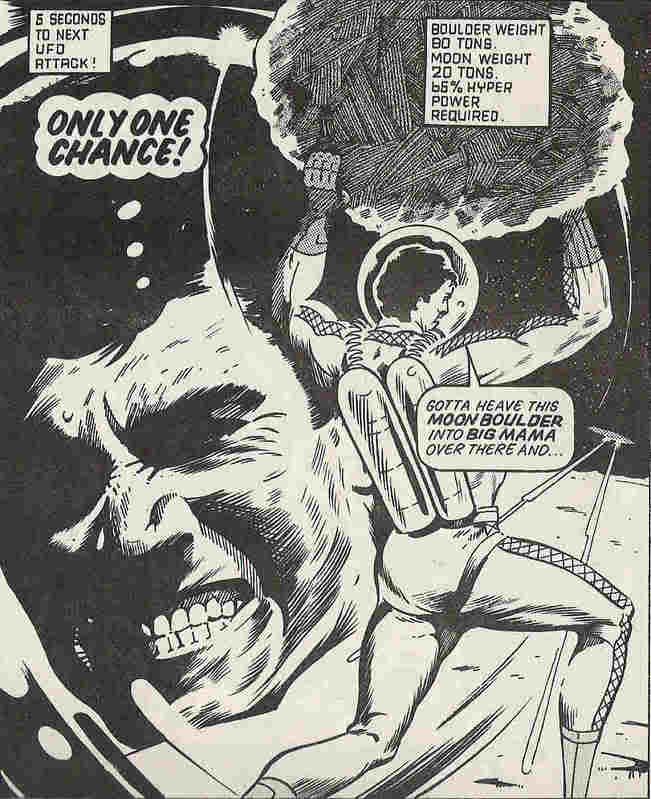
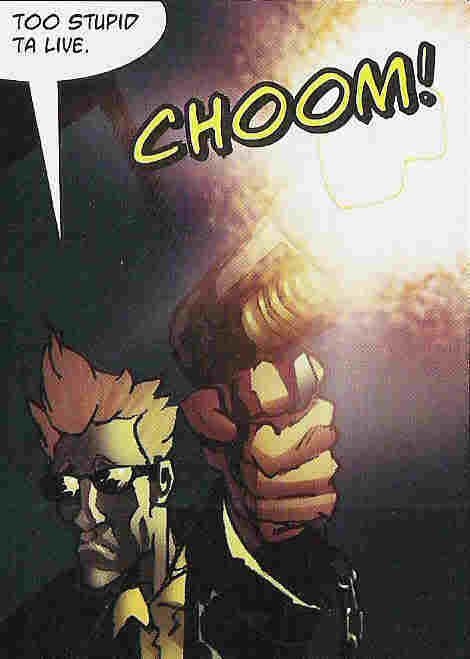
 X-13, the robot villain of the piece, is cut from the same cloth as Bender. i.e. he's basically human and rather mean. Excellent organic metallurgy from McCarthy, and I love the fact that the villain is found in his lair playing with his decks - surely a forewarning of times to come for 2000 AD: about 15 years later Tharg would be desperately trying to pass himself of as a D.J. Whoops. Stick to the jumpsuit, we all say.
X-13, the robot villain of the piece, is cut from the same cloth as Bender. i.e. he's basically human and rather mean. Excellent organic metallurgy from McCarthy, and I love the fact that the villain is found in his lair playing with his decks - surely a forewarning of times to come for 2000 AD: about 15 years later Tharg would be desperately trying to pass himself of as a D.J. Whoops. Stick to the jumpsuit, we all say.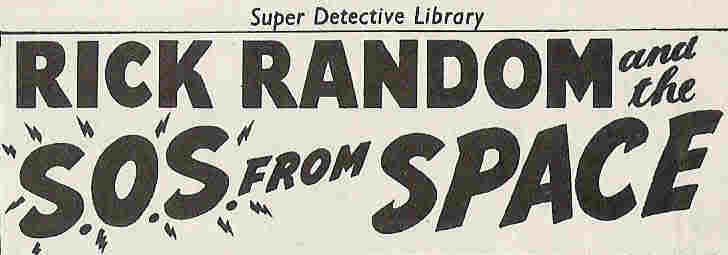 It's outrageously goofy, and in some respects makes you glad that we live in the era of 2000 AD now, where heroes are flawed - unlike the all-too heroic, brainy, resourceful and good-looking Mr Random. On the other hand, there are some delightful touches to the tale that seem utterly ignored by current SF writers - namely, explaining the science behind the conepts introduced, such as Hyperspace. Also, if you read the whole story using voices from a black and white 40s/50s B-movie, the story is twice as fun. Go on, try it out using these two segments:
It's outrageously goofy, and in some respects makes you glad that we live in the era of 2000 AD now, where heroes are flawed - unlike the all-too heroic, brainy, resourceful and good-looking Mr Random. On the other hand, there are some delightful touches to the tale that seem utterly ignored by current SF writers - namely, explaining the science behind the conepts introduced, such as Hyperspace. Also, if you read the whole story using voices from a black and white 40s/50s B-movie, the story is twice as fun. Go on, try it out using these two segments: 
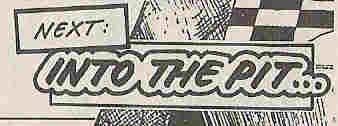
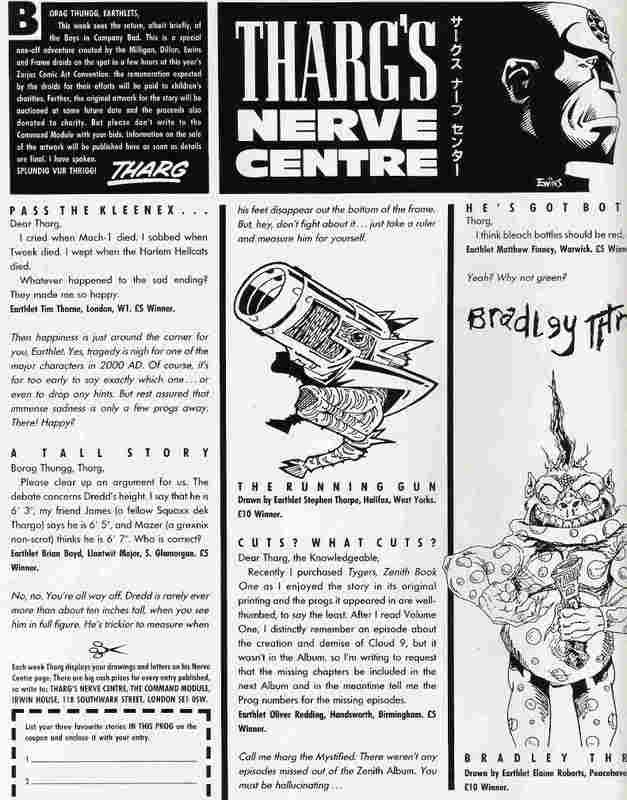
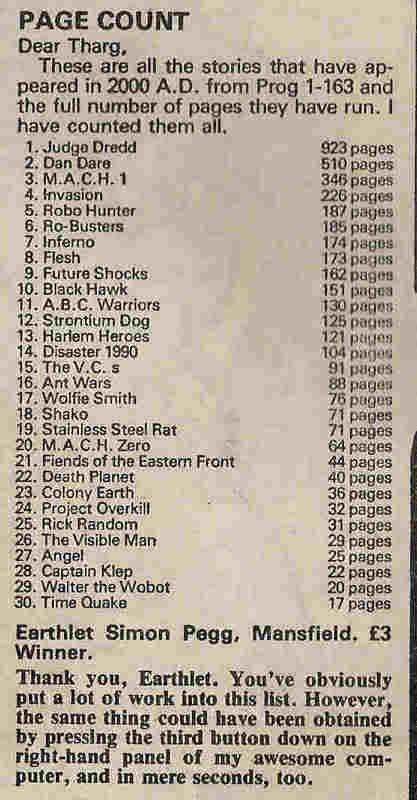
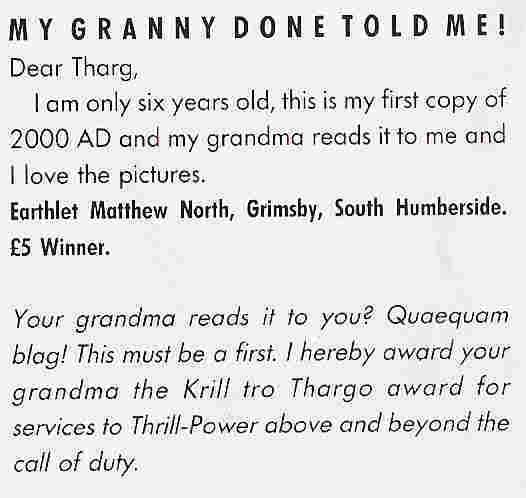
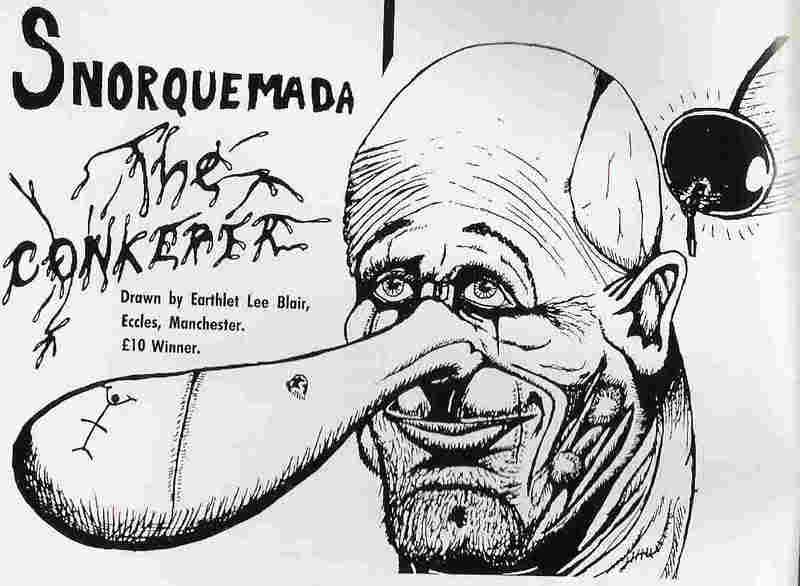
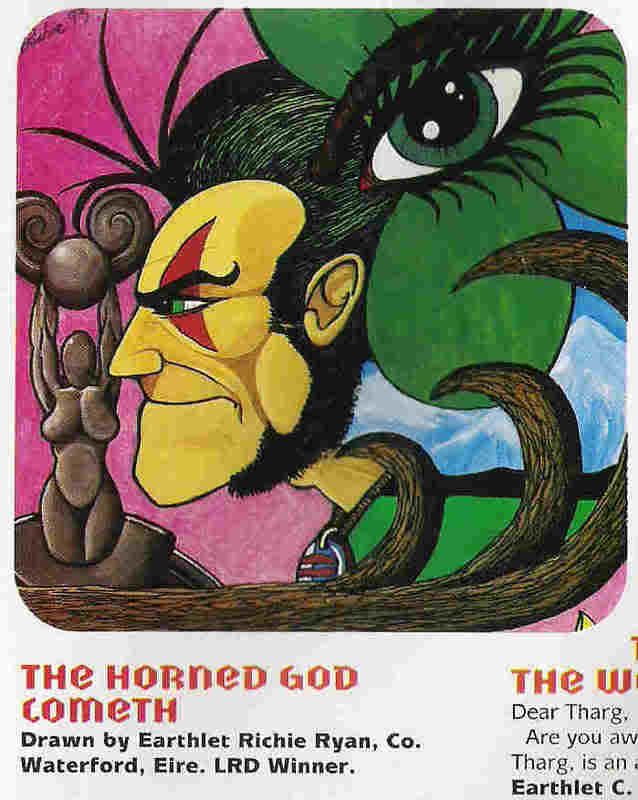

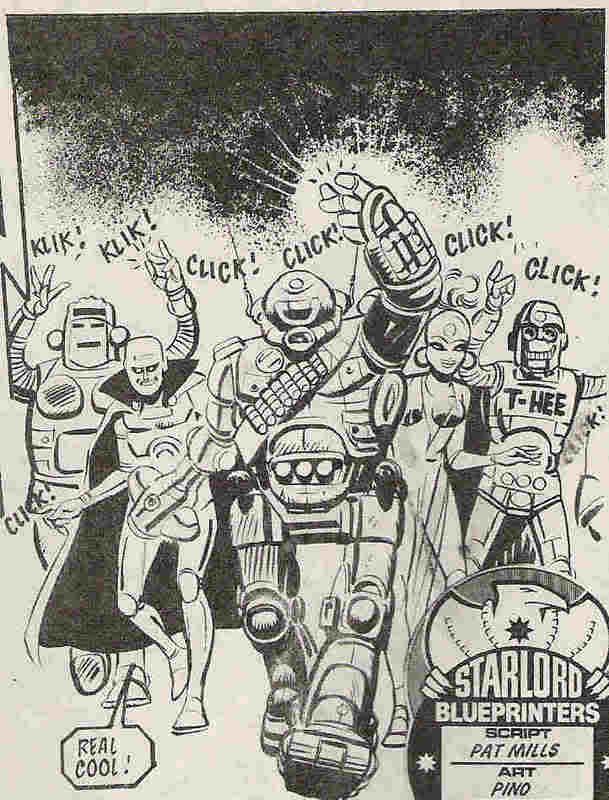
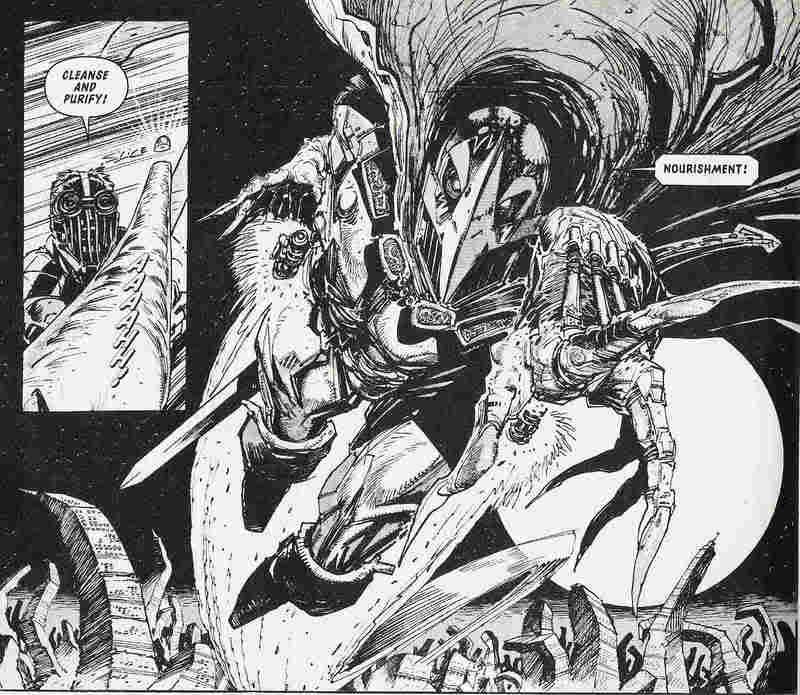
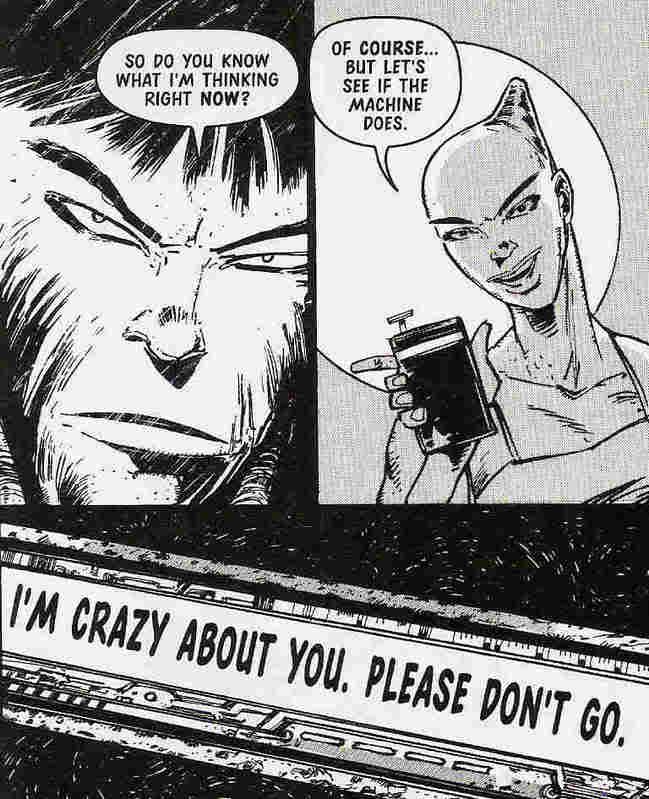 2000 AD is all about killing, maiming, comedy and above all, future shock. But just sometimes, a writer brings out a moment of poignancy. Sure, there's a a swift kick in the head waiting around the corner in the next strip along, but we need these moments. Mills gave us some of the best: Dredd's final crawl through the Cursed Earth; Charlie's triumphant march through Northpool; Mongrol's rages (hey, I end up teary-eyed every time he thinks of Lara). Nowadays we have Robbie Morrison's Nikolai Dante to make us cry from time to time, in between rougish grins and political machinations.
2000 AD is all about killing, maiming, comedy and above all, future shock. But just sometimes, a writer brings out a moment of poignancy. Sure, there's a a swift kick in the head waiting around the corner in the next strip along, but we need these moments. Mills gave us some of the best: Dredd's final crawl through the Cursed Earth; Charlie's triumphant march through Northpool; Mongrol's rages (hey, I end up teary-eyed every time he thinks of Lara). Nowadays we have Robbie Morrison's Nikolai Dante to make us cry from time to time, in between rougish grins and political machinations.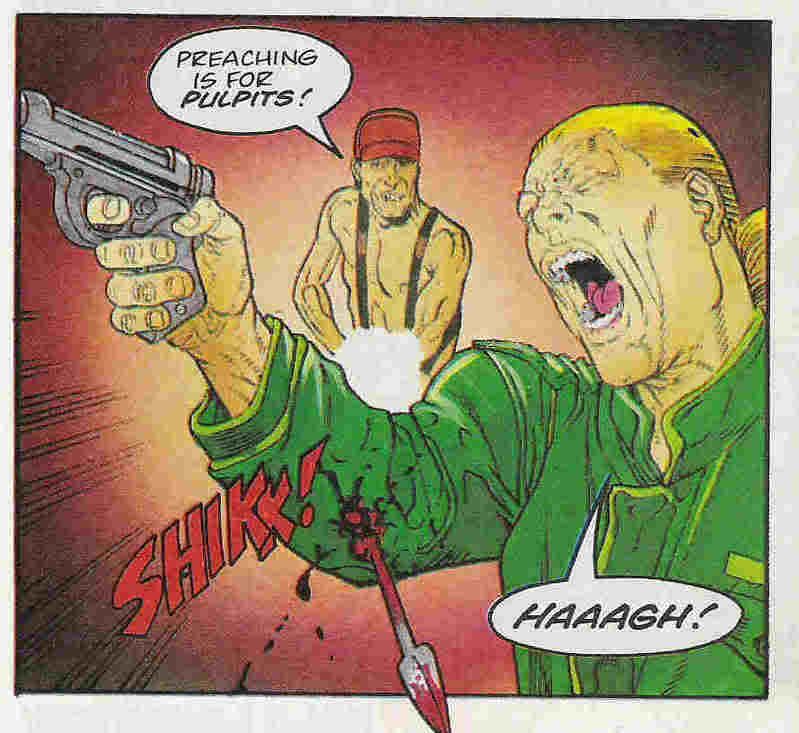
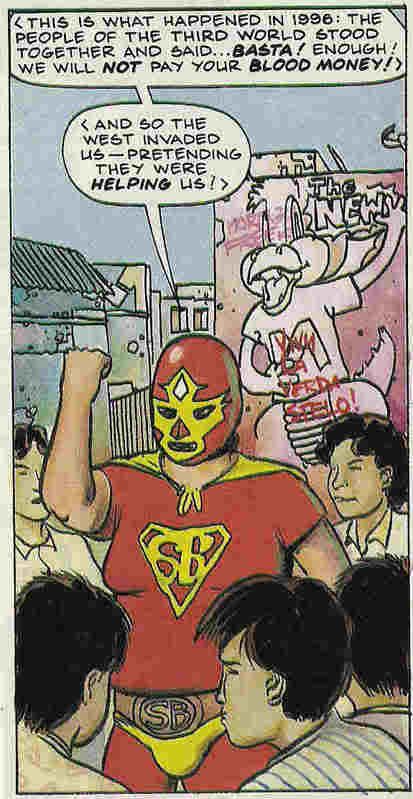
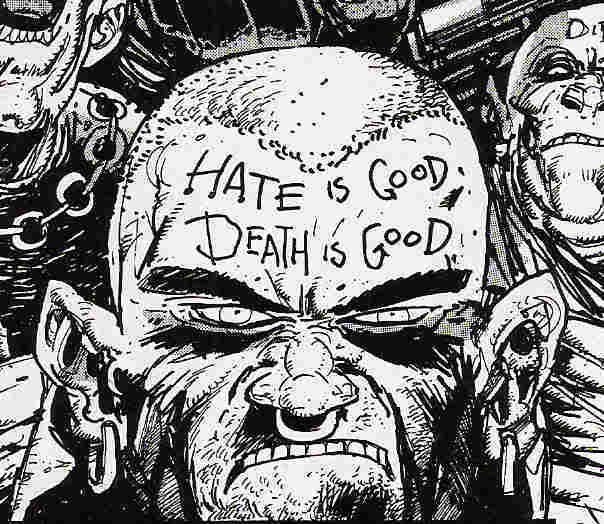 Pat Mills defines 2000 AD with practically every episode of every strip he writes. His characters are iconic to the point of transcending their strips. And just occasionally, Mills manages to plot and script something as inventive as his own imagination. My favourite ever stories, Nemesis the Warlock books I and IV and Slaine: Time Killer; my favourite characters are the ABC Warriors (Well, all except Morrigun and Steelhorn, although he was pretty cool as 'the Mess') . The 2000 AD strip I most want to see as a film is 'The Visible Man' - directed by Cronenberg, of course.
Pat Mills defines 2000 AD with practically every episode of every strip he writes. His characters are iconic to the point of transcending their strips. And just occasionally, Mills manages to plot and script something as inventive as his own imagination. My favourite ever stories, Nemesis the Warlock books I and IV and Slaine: Time Killer; my favourite characters are the ABC Warriors (Well, all except Morrigun and Steelhorn, although he was pretty cool as 'the Mess') . The 2000 AD strip I most want to see as a film is 'The Visible Man' - directed by Cronenberg, of course.
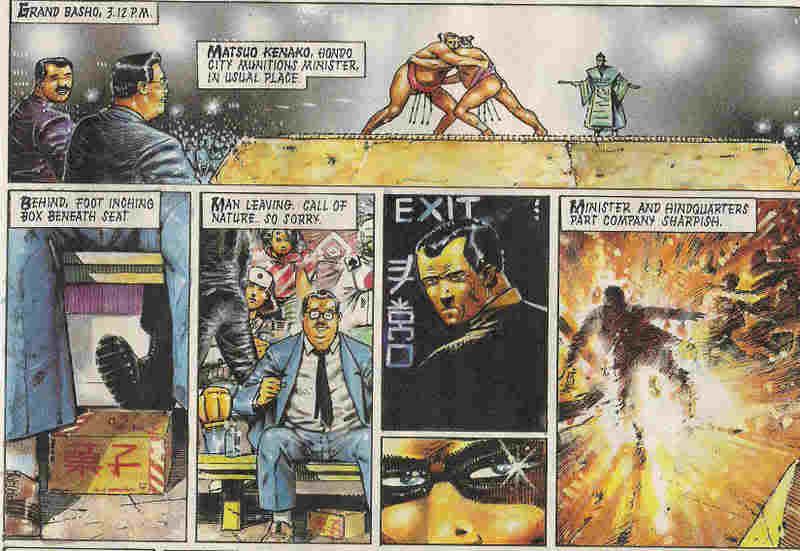 I thought this was hilarious as an 11 year-old in 1990. I still find it charming, but I also wince a little bit. Probably I'm being over-sensitive. And at least it doesn't make me cry inside like these two panels:
I thought this was hilarious as an 11 year-old in 1990. I still find it charming, but I also wince a little bit. Probably I'm being over-sensitive. And at least it doesn't make me cry inside like these two panels: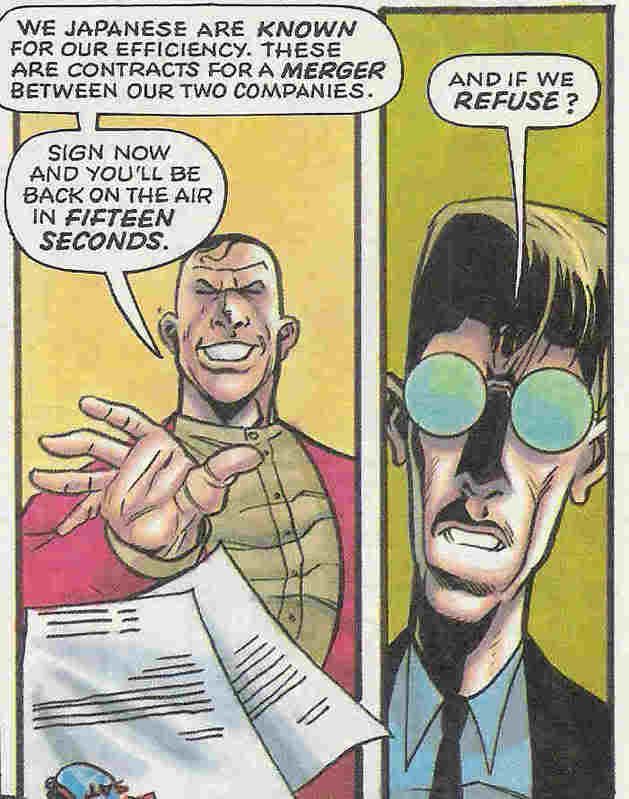

 The problem here is not the use of the word 'krauts' - it's very clear that the characters above are meant to be alightly mad soldiers from the War, with all the prejudice that that would entail. It's the idea that the Brits and the Americans have more firepower, while the Germans have more discipline - and that's what decided the outcome of the War. At first, Germany held strong, but eventually we poured in enough firepower that even the most efficient, discplined German army couldn't cope. I think I just get annoyed when nations and all the people in them are defined by onje or two character traits. Especailly when it ends up that words like 'efficient' and 'disciplined' feel like they're being spat out as insults.
The problem here is not the use of the word 'krauts' - it's very clear that the characters above are meant to be alightly mad soldiers from the War, with all the prejudice that that would entail. It's the idea that the Brits and the Americans have more firepower, while the Germans have more discipline - and that's what decided the outcome of the War. At first, Germany held strong, but eventually we poured in enough firepower that even the most efficient, discplined German army couldn't cope. I think I just get annoyed when nations and all the people in them are defined by onje or two character traits. Especailly when it ends up that words like 'efficient' and 'disciplined' feel like they're being spat out as insults.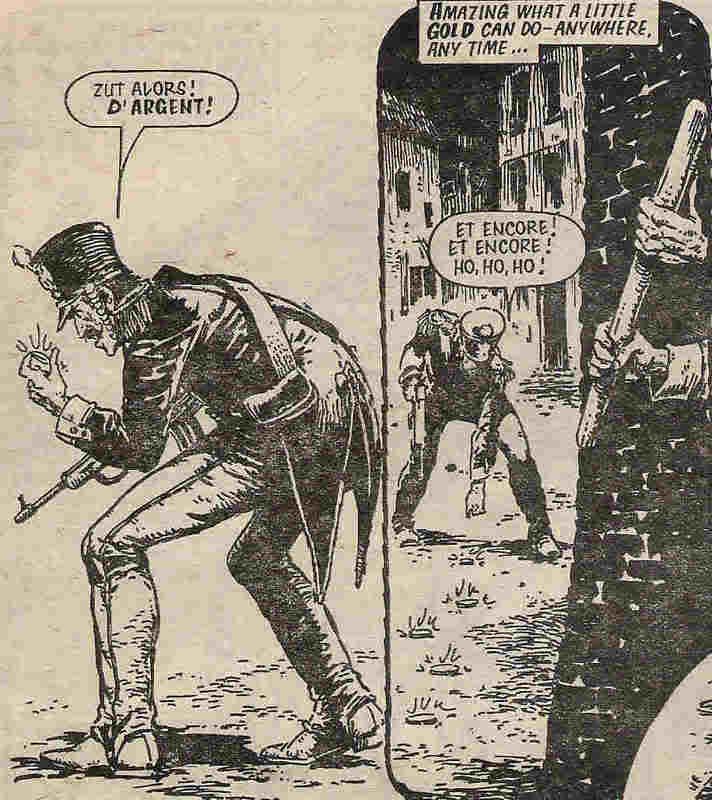

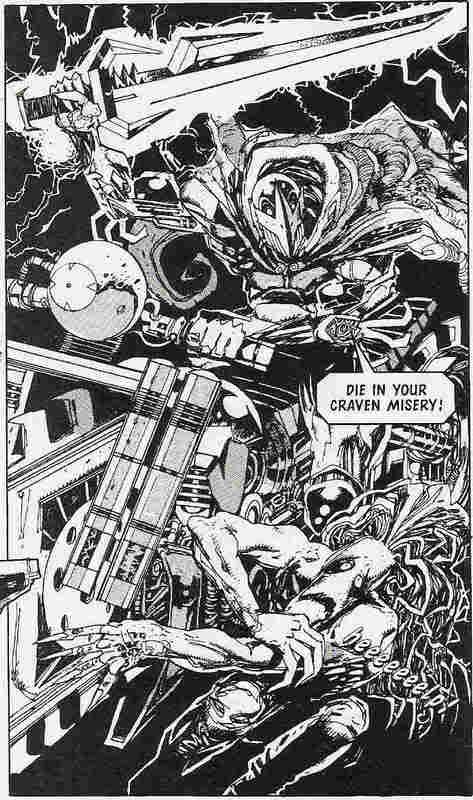
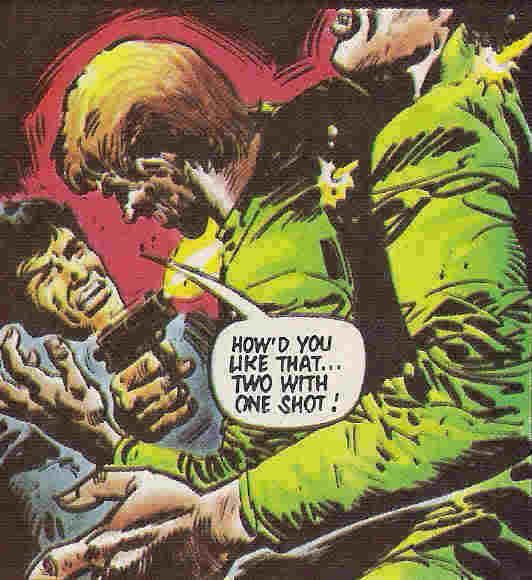 Looking at a little context, other British comics of the 70s had begun this trend in comics like Action and Battle. Comics I never read, 'cos I didn't exist yet, but I'm reliably reformed by the articles in the Megazine. The same articles also make it clear that Pat Mills and John Wagner, joint high priests of 2000 AD, were responsible for the gruesome bits of those comics. A concept they would develop even further with the help of artists like Kev 'more blood! more gore!' O'Neill and Colin 'exit wounds, man!' McNeil.
Looking at a little context, other British comics of the 70s had begun this trend in comics like Action and Battle. Comics I never read, 'cos I didn't exist yet, but I'm reliably reformed by the articles in the Megazine. The same articles also make it clear that Pat Mills and John Wagner, joint high priests of 2000 AD, were responsible for the gruesome bits of those comics. A concept they would develop even further with the help of artists like Kev 'more blood! more gore!' O'Neill and Colin 'exit wounds, man!' McNeil.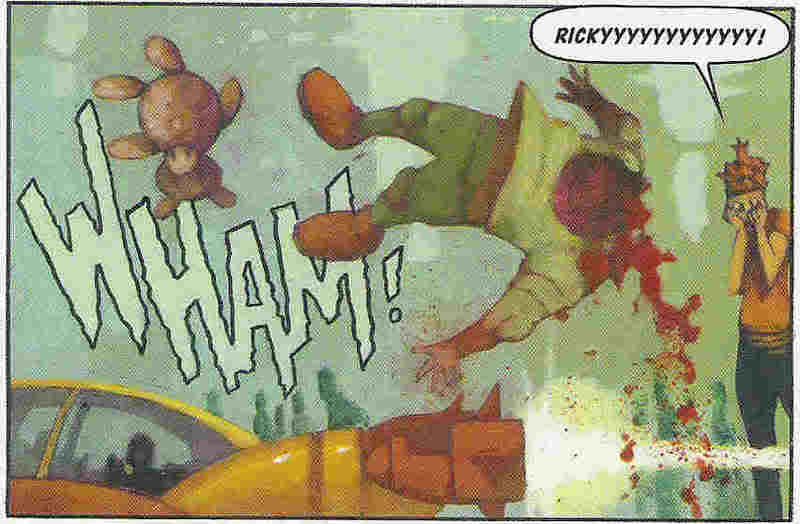
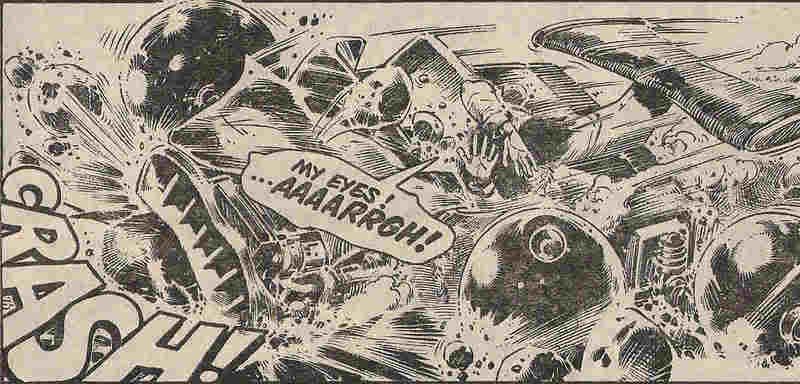
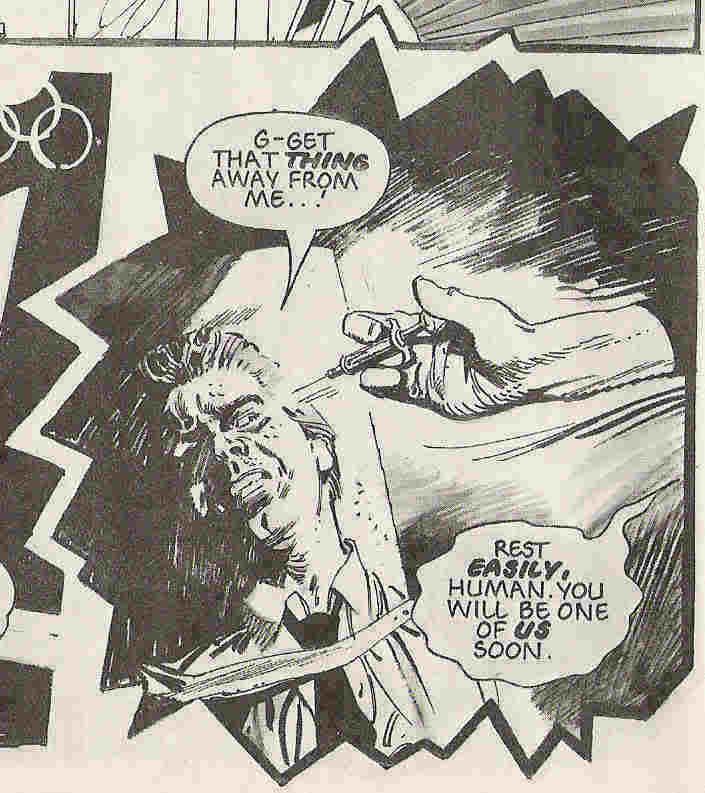
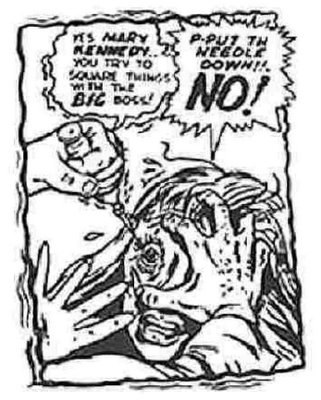 Remind anyone of this infamous panel - one of the key exhibits in the trial when US comics were basically castrated?
Remind anyone of this infamous panel - one of the key exhibits in the trial when US comics were basically castrated?